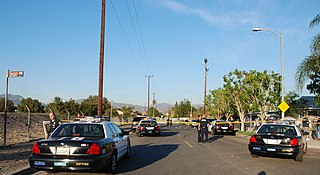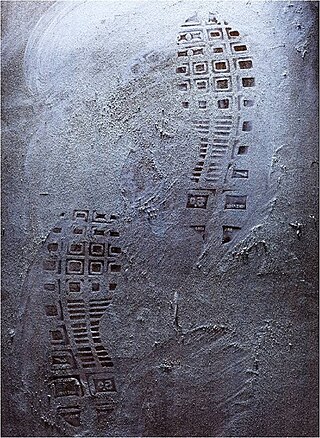An expert witness, particularly in common law countries such as the United Kingdom, Australia, and the United States, is a person whose opinion by virtue of education, training, certification, skills or experience, is accepted by the judge as an expert. The judge may consider the witness's specialized opinion about evidence or about facts before the court within the expert's area of expertise, to be referred to as an "expert opinion". Expert witnesses may also deliver "expert evidence" within the area of their expertise. Their testimony may be rebutted by testimony from other experts or by other evidence or facts.

In the United States, the Miranda warning is a type of notification customarily given by police to criminal suspects in police custody advising them of their right to silence and, in effect, protection from self-incrimination; that is, their right to refuse to answer questions or provide information to law enforcement or other officials. Named for the U.S. Supreme Court's 1966 decision Miranda v. Arizona, these rights are often referred to as Miranda rights. The purpose of such notification is to preserve the admissibility of their statements made during custodial interrogation in later criminal proceedings. The idea came from law professor Yale Kamisar, who subsequently was dubbed "the father of Miranda."

The Sixth Amendment to the United States Constitution sets forth rights related to criminal prosecutions. It was ratified in 1791 as part of the United States Bill of Rights. The Supreme Court has applied all but one of this amendment's protections to the states through the Due Process Clause of the Fourteenth Amendment.
Voice analysis is the study of speech sounds for purposes other than linguistic content, such as in speech recognition. Such studies include mostly medical analysis of the voice (phoniatrics), but also speaker identification. More controversially, some believe that the truthfulness or emotional state of speakers can be determined using voice stress analysis or layered voice analysis.
A deposition in the law of the United States, or examination for discovery in the law of Canada, involves the taking of sworn, out-of-court oral testimony of a witness that may be reduced to a written transcript for later use in court or for discovery purposes. Depositions are commonly used in litigation in the United States and Canada. They are almost always conducted outside court by the lawyers themselves, with no judge present to supervise the examination.

Sound quality is typically an assessment of the accuracy, fidelity, or intelligibility of audio output from an electronic device. Quality can be measured objectively, such as when tools are used to gauge the accuracy with which the device reproduces an original sound; or it can be measured subjectively, such as when human listeners respond to the sound or gauge its perceived similarity to another sound.
A nursing diagnosis may be part of the nursing process and is a clinical judgment about individual, family, or community experiences/responses to actual or potential health problems/life processes. Nursing diagnoses foster the nurse's independent practice compared to dependent interventions driven by physician's orders. Nursing diagnoses are developed based on data obtained during the nursing assessment. A problem-based nursing diagnosis presents a problem response present at time of assessment. Risk diagnoses represent vulnerabilities to potential problems, and health promotion diagnoses identify areas which can be enhanced to improve health. Whereas a medical diagnosis identifies a disorder, a nursing diagnosis identifies the unique ways in which individuals respond to health or life processes or crises. The nursing diagnostic process is unique among others. A nursing diagnosis integrates patient involvement, when possible, throughout the process. NANDA International (NANDA-I) is body of professionals that develops, researches and refines an official taxonomy of nursing diagnosis.
Apprendi v. New Jersey, 530 U.S. 466 (2000), is a landmark United States Supreme Court decision with regard to aggravating factors in crimes. The Court ruled that the Sixth Amendment right to a jury trial, incorporated against the states through the Fourteenth Amendment, prohibited judges from enhancing criminal sentences beyond statutory maxima based on facts other than those decided by the jury beyond a reasonable doubt. The decision has been a cornerstone in the modern resurgence in jury trial rights. As Justice Scalia noted in his concurring opinion, the jury-trial right "has never been efficient; but it has always been free."

In common law jurisdictions, probate is the judicial process whereby a will is "proved" in a court of law and accepted as a valid public document that is the true last testament of the deceased, or whereby the estate is settled according to the laws of intestacy in the state of residence of the deceased at time of death in the absence of a legal will.
In administrative law, rulemaking is the process that executive and independent agencies use to create, or promulgate, regulations. In general, legislatures first set broad policy mandates by passing statutes, then agencies create more detailed regulations through rulemaking.

A crime scene is any location that may be associated with a committed crime. Crime scenes contain physical evidence that is pertinent to a criminal investigation. This evidence is collected by crime scene investigators (CSI) and law enforcement. The location of a crime scene can be the place where the crime took place or can be any area that contains evidence from the crime itself. Scenes are not only limited to a location, but can be any person, place, or object associated with the criminal behaviours that occurred.
Diamond v. Diehr, 450 U.S. 175 (1981), was a United States Supreme Court decision which held that controlling the execution of a physical process, by running a computer program did not preclude patentability of the invention as a whole. The high court reiterated its earlier holdings that mathematical formulas in the abstract could not be patented, but it held that the mere presence of a software element did not make an otherwise patent-eligible machine or process patent ineligible. Diehr was the third member of a trilogy of Supreme Court decisions on the patent-eligibility of computer software related inventions.
In evidence law, digital evidence or electronic evidence is any probative information stored or transmitted in digital form that a party to a court case may use at trial. Before accepting digital evidence a court will determine if the evidence is relevant, whether it is authentic, if it is hearsay and whether a copy is acceptable or the original is required.

Forensic photography may refer to the visual documentation of different aspects that can be found at a crime scene. It may include the documentation of the crime scene, or physical evidence that is either found at a crime scene or already processed in a laboratory. Forensic photography differs from other variations of photography because crime scene photographers usually have a very specific purpose for capturing each image. As a result, the quality of forensic documentation may determine the result of an investigation; in the absence of good documentation, investigators may find it impossible to conclude what did or did not happen.
Bellotti v. Baird, 443 U.S. 622 (1979), is a United States Supreme Court case that ruled 8-1 that teenagers do not have to secure parental consent to obtain an abortion.

An audio engineer helps to produce a recording or a live performance, balancing and adjusting sound sources using equalization, dynamics processing and audio effects, mixing, reproduction, and reinforcement of sound. Audio engineers work on the "technical aspect of recording—the placing of microphones, pre-amp knobs, the setting of levels. The physical recording of any project is done by an engineer… the nuts and bolts."
The general framework and the body of Hong Kong’s criminal laws were in fact imported from the United Kingdom when Hong Kong was first become a Crown colony in 1842 under the Treaty of Nanking. Even nowadays, after the handover and years of development and modification, these laws are still very similar to those in the UK. Just like in Britain, criminal laws in Hong Kong are entailed in different statutory law and common law.
United States v. Valenzuela-Bernal, 458 U.S. 858 (1982), is a United States Supreme Court case that determined the constitutionality of deporting aliens who might give testimony in criminal alien smuggling prosecutions. Because deporting alien witnesses might take away a testimony that would be both “material and favorable” to the defendant, it gives rise to a potential motion from the defense to dismiss the indictment under the Compulsory Process Clause of the Sixth Amendment and the Due Process Clause of the Fifth Amendment.

Audio forensics is the field of forensic science relating to the acquisition, analysis, and evaluation of sound recordings that may ultimately be presented as admissible evidence in a court of law or some other official venue.
Akamai Technologies, Inc. v. Limelight Networks, Inc., 797 F.3d 1020, is a 2015 en banc decision of the United States Court of Appeals for the Federal Circuit, on remand from a 2014 decision of the U.S. Supreme Court reversing a previous Federal Circuit decision in the case. This is the most recent in a string of decisions in the case that concern the proper legal standard for determining patent infringement liability when multiple actors are involved in carrying out the claimed infringement of a method patent and no single accused infringer has performed all of the steps. In the 2015 remand decision, the Federal Circuit expanded the scope of vicarious liability in such cases, holding that one actor could be held liable for the acts of another actor "when an alleged infringer conditions participation in an activity or receipt of a benefit upon performance of a step or steps of a patented method and establishes the manner or timing of that performance." In addition, the court held that where multiple "actors form a joint enterprise, all can be charged with the acts of the other[s], rendering each liable for the steps performed by the other[s] as if each is a single actor."







